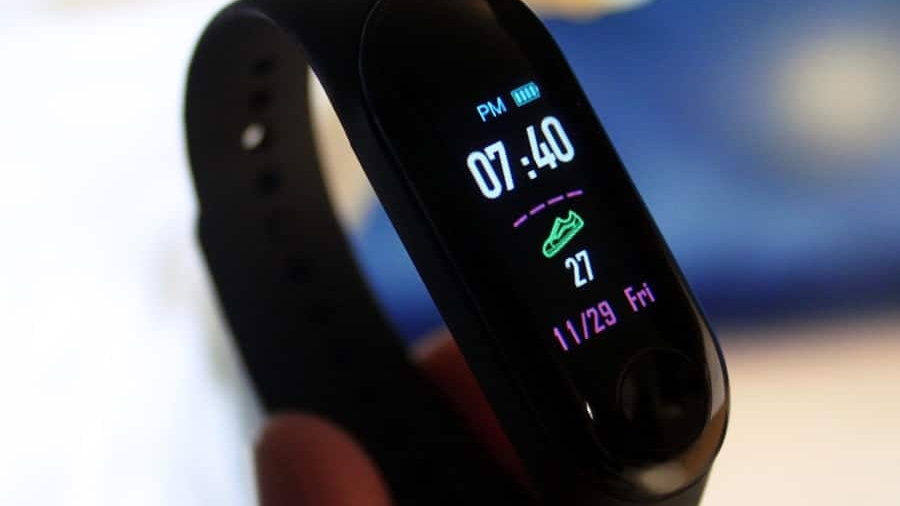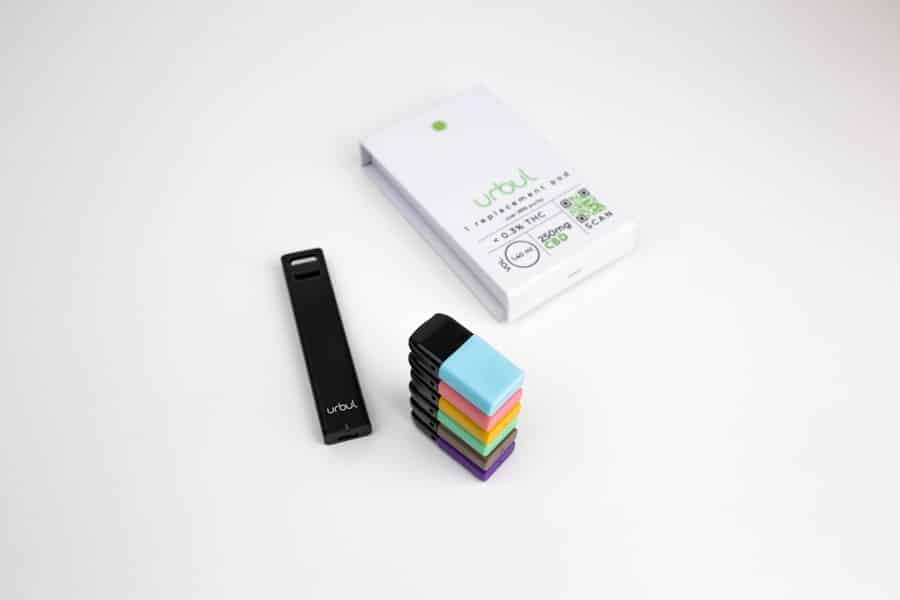Wearable blood oxygen trackers have emerged as a pivotal innovation in the realm of health technology, particularly in the management of respiratory illnesses. These devices, often integrated into smartwatches or fitness bands, utilize advanced sensors to measure blood oxygen saturation levels (SpO2) in real-time. The significance of monitoring blood oxygen levels cannot be overstated, especially for individuals suffering from conditions such as chronic obstructive pulmonary disease (COPD), asthma, and other respiratory disorders.
By providing continuous data, these trackers empower users to take proactive steps in managing their health, potentially averting severe complications associated with low oxygen levels. The rise of wearable technology has coincided with an increasing awareness of the importance of respiratory health. As the global population ages and the prevalence of respiratory diseases rises, the demand for effective monitoring solutions has surged.
Wearable blood oxygen trackers not only facilitate immediate access to vital health information but also promote a culture of self-management among patients. This shift towards personalized healthcare is transforming how individuals interact with their health data, enabling them to make informed decisions based on real-time insights.
Key Takeaways
- Wearable blood oxygen trackers provide a convenient and non-invasive way to monitor blood oxygen levels on the go.
- Current challenges in monitoring blood oxygen levels for respiratory illnesses include the need for frequent and accurate measurements, especially during physical activity or sleep.
- Advancements in wearable blood oxygen tracking technology have led to the development of smaller, more accurate, and user-friendly devices.
- Potential benefits of wearable blood oxygen trackers for respiratory illnesses include early detection of hypoxemia, personalized health insights, and improved management of chronic conditions.
- Integration of wearable blood oxygen trackers with telemedicine can enable remote monitoring and timely intervention for patients with respiratory illnesses.
Current Challenges in Monitoring Blood Oxygen Levels for Respiratory Illnesses
Accuracy of Readings: A Concern
One significant issue is the accuracy of readings obtained from traditional pulse oximeters, which can be influenced by various factors such as skin pigmentation, temperature, and even nail polish. For patients with darker skin tones, studies have shown that conventional pulse oximeters may underestimate oxygen saturation levels, leading to potential misdiagnosis or delayed treatment.
Accessibility: A Major Hurdle
Moreover, the accessibility of traditional monitoring devices poses another challenge. Many patients with respiratory conditions may not have immediate access to clinical settings where they can receive accurate blood oxygen assessments.
A New Solution: Wearable Trackers
Additionally, the cumbersome nature of some medical devices can deter patients from using them regularly, leading to gaps in monitoring and management. Wearable blood oxygen trackers aim to address these issues by providing a more user-friendly and accessible alternative that encourages consistent monitoring.
Advancements in Wearable Blood Oxygen Tracking Technology
The evolution of wearable blood oxygen tracking technology has been marked by significant advancements that enhance both accuracy and usability. Modern devices leverage photoplethysmography (PPG) technology, which uses light sensors to detect changes in blood volume and calculate oxygen saturation levels. This non-invasive method allows for continuous monitoring without the discomfort associated with traditional methods.
Furthermore, recent innovations have led to the miniaturization of sensors, enabling their integration into everyday wearables like smartwatches and fitness bands. In addition to improved sensor technology, software algorithms have also seen remarkable progress. Machine learning techniques are increasingly being employed to refine the accuracy of readings and reduce noise from external factors.
These algorithms can analyze vast amounts of data collected from users to identify patterns and anomalies in blood oxygen levels. As a result, wearable trackers are becoming more adept at providing personalized insights that can alert users to potential health issues before they escalate. This combination of advanced hardware and intelligent software is setting a new standard for health monitoring devices.
Potential Benefits of Wearable Blood Oxygen Trackers for Respiratory Illnesses
The potential benefits of wearable blood oxygen trackers for individuals with respiratory illnesses are manifold. One of the most significant advantages is the ability to monitor oxygen levels continuously throughout the day.
For instance, a patient with COPD may notice a decline in their SpO2 levels during physical activity, prompting them to adjust their exertion level or seek medical advice. Additionally, wearable trackers can enhance communication between patients and healthcare providers. Many devices come equipped with features that allow users to share their data directly with their doctors or caregivers.
This seamless exchange of information fosters a collaborative approach to health management, where healthcare professionals can make informed decisions based on accurate and up-to-date data. Such integration can lead to more tailored treatment plans and improved patient outcomes, as healthcare providers can respond promptly to any concerning trends in a patient’s oxygen levels.
Integration of Wearable Blood Oxygen Trackers with Telemedicine
The integration of wearable blood oxygen trackers with telemedicine platforms represents a significant leap forward in remote healthcare delivery. Telemedicine has gained traction in recent years, particularly during the COVID-19 pandemic, as it allows patients to consult with healthcare providers without the need for in-person visits. By incorporating wearable technology into telemedicine practices, healthcare professionals can monitor patients’ vital signs remotely, ensuring that individuals with respiratory illnesses receive timely care even when they are not physically present in a clinical setting.
This integration facilitates proactive management of respiratory conditions by enabling real-time monitoring and intervention. For example, if a patient’s wearable tracker indicates a sudden drop in blood oxygen levels during a telehealth consultation, the healthcare provider can quickly assess the situation and recommend appropriate actions, such as adjusting medication or advising an emergency visit if necessary. This capability not only enhances patient safety but also reduces the burden on healthcare facilities by minimizing unnecessary hospital visits.
Future Developments and Innovations in Wearable Blood Oxygen Tracking
Predictive Health Insights
AI algorithms could analyze user data over time to predict potential health issues before they arise, offering personalized recommendations based on individual health profiles. For example, an AI-powered tracker might suggest lifestyle changes or alert users about environmental factors that could exacerbate their respiratory conditions.
Enhancing Wearability and Aesthetics
Future innovations may focus on enhancing the comfort and aesthetics of wearable devices. As users become more discerning about the wearability of health tech, manufacturers are likely to prioritize designs that are not only functional but also stylish and comfortable for everyday use.
Increased Adoption Rates
This shift could lead to increased adoption rates among individuals who may be hesitant to wear traditional medical devices due to their bulkiness or lack of appeal.
Considerations for the Adoption and Use of Wearable Blood Oxygen Trackers
While the benefits of wearable blood oxygen trackers are compelling, several considerations must be addressed for successful adoption and use. One critical factor is user education; individuals must understand how to interpret their data accurately and recognize when to seek medical assistance based on their readings. Without proper guidance, there is a risk that users may misinterpret their results or become overly reliant on technology without consulting healthcare professionals.
Data privacy and security also pose significant concerns as wearable devices collect sensitive health information. Manufacturers must implement robust security measures to protect user data from breaches or unauthorized access. Additionally, clear communication regarding data usage policies is essential to build trust among users who may be apprehensive about sharing their health information with third parties.
The Role of Wearable Blood Oxygen Trackers in Managing Respiratory Illnesses
Wearable blood oxygen trackers are poised to play a transformative role in managing respiratory illnesses by providing continuous monitoring and facilitating proactive health management. As technology continues to evolve, these devices will likely become even more sophisticated, offering enhanced accuracy and personalized insights that empower users to take charge of their health. The integration of wearable technology with telemedicine further amplifies its potential impact, ensuring that individuals receive timely care regardless of their location.
However, for these innovations to reach their full potential, it is crucial to address challenges related to user education, data privacy, and device accessibility. By fostering an environment where patients feel informed and secure in using wearable blood oxygen trackers, we can pave the way for a future where respiratory illnesses are managed more effectively and efficiently than ever before.
The article “Unlock Your Potential with the Samsung Galaxy Book2 Pro” discusses the features and capabilities of the latest Samsung laptop, which could potentially be used in conjunction with wearable blood oxygen trackers for respiratory illnesses. By utilizing the powerful technology of the Samsung Galaxy Book2 Pro, individuals with respiratory illnesses can track their blood oxygen levels more efficiently and effectively. To learn more about the best Android apps for 2023 and the best Lenovo laptops, check out this article respectively.
FAQs
What are wearable blood oxygen trackers?
Wearable blood oxygen trackers are devices that can be worn on the body to continuously monitor the level of oxygen in the blood. These devices are often used by individuals with respiratory illnesses such as asthma, COPD, and sleep apnea to track their blood oxygen levels throughout the day.
How do wearable blood oxygen trackers work?
Wearable blood oxygen trackers typically use a technology called pulse oximetry to measure the oxygen saturation in the blood. This is done by emitting light through the skin and measuring the amount of light absorbed by the oxygen-carrying hemoglobin in the blood.
What are the benefits of using wearable blood oxygen trackers for respiratory illnesses?
Wearable blood oxygen trackers can provide individuals with respiratory illnesses real-time data on their blood oxygen levels, allowing them to monitor their condition and take necessary actions if their levels drop too low. This can help individuals manage their respiratory illness more effectively and potentially prevent complications.
What is the future of wearable blood oxygen trackers for respiratory illnesses?
The future of wearable blood oxygen trackers for respiratory illnesses is promising, with advancements in technology leading to more accurate and user-friendly devices. These trackers are expected to become more integrated with other health monitoring systems and may even incorporate artificial intelligence to provide personalized insights and recommendations for individuals with respiratory illnesses.



